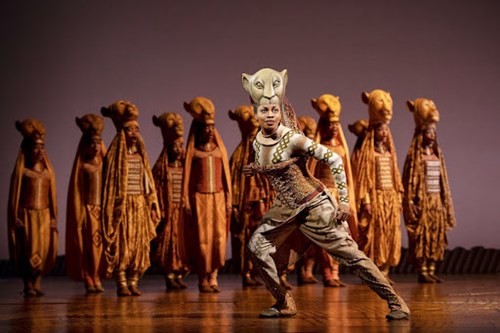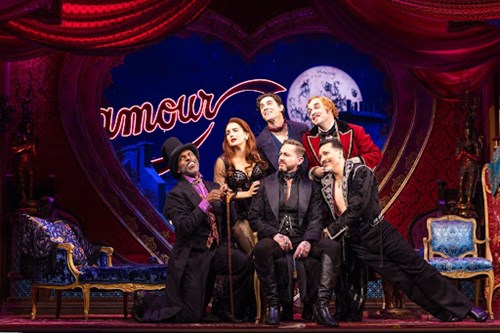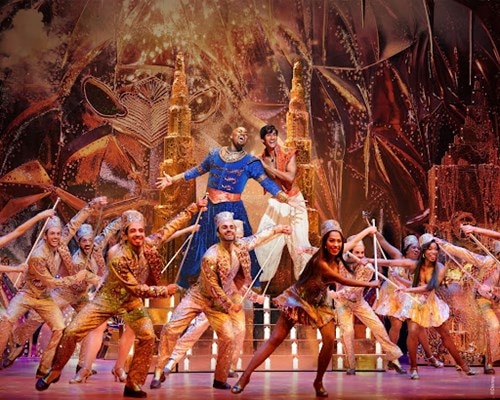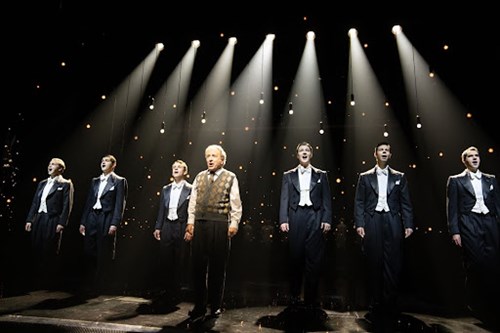
The world of Broadway musicals is a colorful tapestry woven with threads from many corners of the globe. As we pull back the curtain and shine the spotlight on the stage, we often see stories, characters, and melodies that have been influenced, and sometimes directly lifted, from international cultures and history.
From its earliest days, Broadway has been a melting pot of different cultures, ideas, and artistic expressions. These influences not only enrich the narrative and aesthetic of productions, but also foster a sense of global unity and understanding. By telling stories inspired by different cultures and histories, Broadway musicals have the power to transport us across time and space, transcending geographical boundaries and bridging cultural divides.
The influence of international cultures and histories in Broadway musicals brings to the forefront the interconnectedness of our world. It allows audiences to explore the world from the comfort of their theatre seats, broadening their horizons and deepening their understanding of various global cultures.
The African Artistry of The Lion King
Broadway’s The Lion King is a shining beacon of African artistry and storytelling, a cornucopia of colorful visuals, pulsating rhythms, and timeless themes that resonate with audiences worldwide. The musical, an adaptation of Disney’s 1994 animated film, draws heavily on African cultural influences, from its costuming to its iconic music, infused with the rhythms and melodies of traditional African song.
The African music and artistry that comprise The Lion King have been instrumental in its enduring success. The powerful Zulu opening call in ‘Circle of Life’, for example, is instantly recognizable and serves as a stirring introduction to the African soundscape of the musical. The set designs, costumes, and choreography, too, are steeped in African aesthetics, creating a rich visual tapestry that captivates audiences.
However, the incorporation of African elements in The Lion King goes beyond surface-level aesthetics. The casting of South African performers like Pearl Khwezi and Tshidi Manye is a significant step toward accurate cultural representation in Broadway musicals.

French Bohemia in Moulin Rouge!
As we journey from Africa to Europe, our next stop is France, a country whose art, culture, and history have left an indelible mark on Broadway. One musical that encapsulates French influence in all its splendor is Moulin Rouge!. Based on Baz Luhrmann’s 2001 film, the musical transports audiences to the heart of bohemian Paris, to the infamous cabaret venue that lends the production its name.
Moulin Rouge! is a visual and auditory feast, steeped in the history and culture of late 19th-century France. The narrative delves into the bohemian ideals of truth, beauty, freedom, and love, which were central to Parisian artists and thinkers of the period. It also presents a portrait of the cabaret culture that defined the Montmartre district, showcasing the revelry, romance, and artistic fervor that characterized this iconic era of French history.
French culture shines through in the lavish set and costume design of Moulin Rouge!. The musical’s extravagant sets, inspired by the architectural grandeur of Belle Époque Paris, and the opulent costumes, which echo the flamboyant fashion of French cabaret, provide a sensory feast for the audience. This French influence extends beyond the visual, permeating the music, narrative, and overall ambiance of the production.
Middle Eastern Magic of Aladdin
Next, we journey to the enchanting world of the Middle East with Broadway’s Aladdin. This musical adaptation of Disney’s beloved 1992 animated film whisks audiences away on a magic carpet ride, filled with mesmerizing music.
The Middle Eastern influence in Aladdin is evident in its music and folklore. The musical score, composed by Alan Menken, skillfully incorporates Middle Eastern rhythms and melodies, complementing the narrative’s Arabian setting. The story itself is inspired by One Thousand and One Nights, a collection of Middle Eastern folk tales that have captivated readers for centuries.

British Penny Dreadfuls in Sweeney Todd
Our next stop on this cultural journey brings us to the shadowy streets of Georgian Era England with Sweeney Todd. This macabre musical, with music and lyrics by Stephen Sondheim, has become a Broadway classic, thrilling audiences with its dark humor and tragic tale.
Sweeney Todd is deeply rooted in both Georgian and Victorian eras of English culture. The story, which first appeared as a serialized narrative in a Victorian penny dreadful, is set in 18th-century London. The grimy, cobblestone streets and gloomy atmosphere of the musical reflect the darker side of these eras.
The societal norms and values of the time play a significant role in Sweeney Todd. The musical explores themes of class disparity, social mobility, and moral corruption, issues that were pervasive in Victorian society. The character of Sweeney Todd, a barber who resorts to murder and cannibalism after being wronged by the upper classes, serves as a critique of the rigid class structure and social injustices of the time.
German and Jewish History in Harmony
Our cultural journey concludes with Harmony, a Broadway musical that pays tribute to the Comedian Harmonists, a renowned German vocal group that rose to fame in the late 1920s. Written by Barry Manilow and Bruce Sussman, the musical explores the extraordinary journey of these six talented men, skillfully weaving a tale of music, friendship, and resilience against the backdrop of pre-World War II Germany.
The Comedian Harmonists, with their unique blend of close harmonies and comic antics, left an indelible mark on the world of music. Harmony captures the essence of their musical genius, while also presenting an authentic portrayal of the era in which they lived. The musical explores the escalating antisemitic tension and chilling atmosphere of pre-WWII Germany, providing historical context to the story of the Comedian Harmonists.

Our journey through Broadway’s international inspirations has taken us from the vibrant plains of Africa with The Lion King to the enchanting deserts of the Middle East seen in Aladdin, the opulent cabarets of France with Moulin Rouge!, the somber streets of England in Sweeney Todd, and finally to pre-war Germany with Harmony. Each of these musicals, in their own unique way, has been shaped by the cultures and histories of these diverse regions.
The richness of Broadway musicals lies not only in their music, narrative, and performances but also in the cultures they represent and the histories they explore. This diversity enhances the creative process, enriches the audience’s experience, and promotes a deeper understanding and appreciation of our multicultural world.
So, the next time you settle into your theatre seat, remember the stories that have traveled from across the globe to reach the Great White Way. And most importantly, experience these stories for yourself, for there’s nothing quite like the magic of Broadway!

